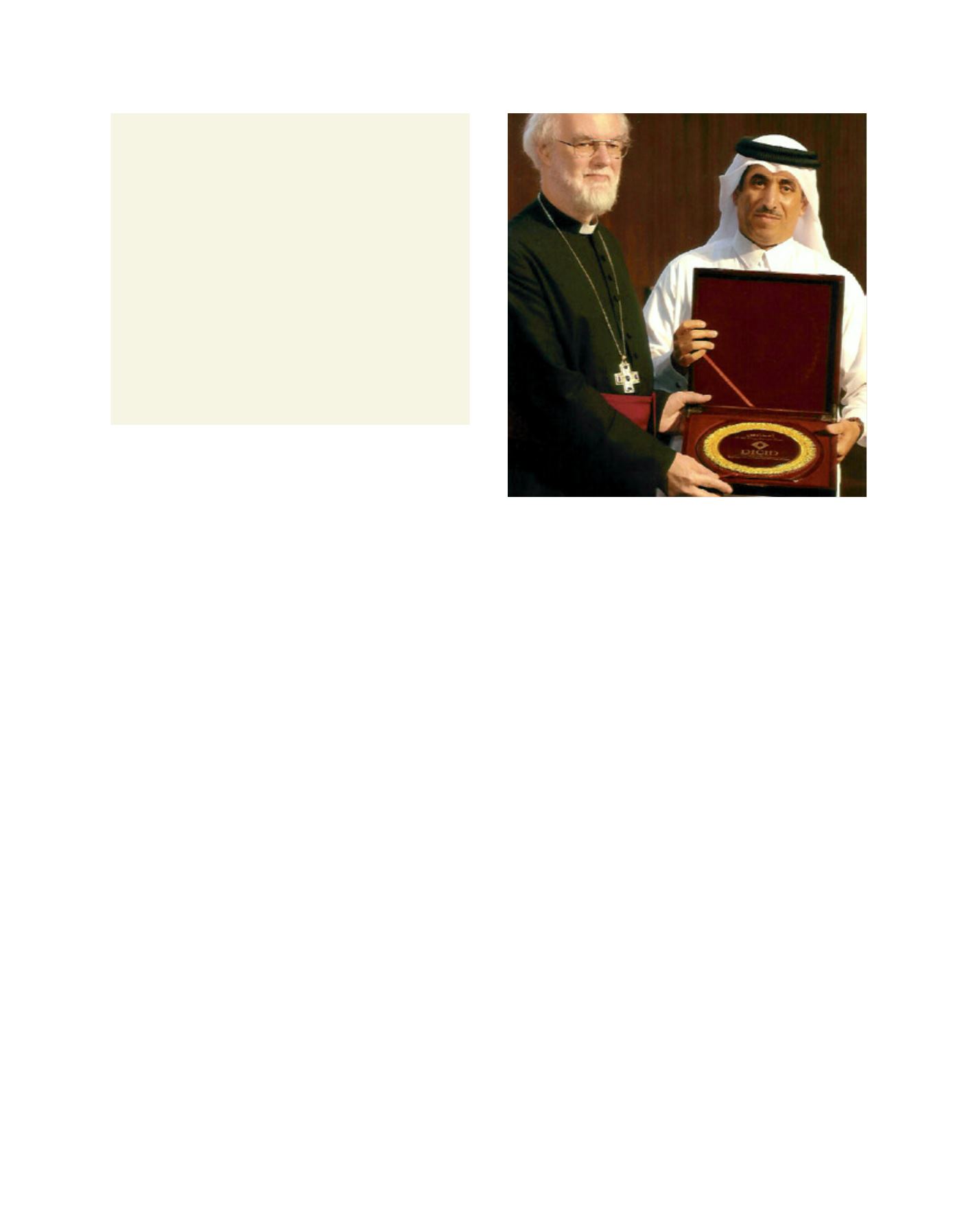

[
] 84
Coming together
Interfaith spirituality is one not informed by the commonality in the
aggregation of religious views but vice versa: religious views are informed
by the Ocean of Spirituality (or the spirit of love, of compassion, of
interconnectedness). The metaphor of rivers flowing into one ocean
has to be reversed to experience the depth and meaning of interfaith
spirituality. In the wholeness of being, the ocean is primary, not the rivers.
Interfaith beings are border beings, beings who can seamlessly move
across religious borders, compassionately, clearly and courageously.
It is the basis of coming together as one being for the benefit of the
sustainable cultures we all need for the generations to come.
Whatever
the religion we profess, we are today faced with an ecological crisis that
threatens all life and Mother Earth. We need to be together as one in
this and there is no other way. To be religiously free from this point of
view means to be responsible for nature or Mother Earth that hold us
together. And there is no use of religious freedom without a planet.
– Nadarajah Manickam, Global Centre for the Study of Sustainable
Futures and Spirituality, India
can only understand the ‘other’ by interpreting what we encounter
in the light of our own experience. However, through encounter
students discover a shared humanity and learn that common-
ality emerges through different religious stories and practices,
and that disagreement and conflict may be the result of ‘distance’
rather than ‘discernment’ at close quarters. This academic process
involves exchange and dialogue. It involves listening as well as
speaking; an attempt to understand others in their own terms, as
we ourselves wish to be understood, explained Dr Ed Kessler of
the Woolf Institute in Cambridge, UK.
Once we are aware of our own perceptions, we can begin
to engage with others more effectively. Personal encounters
foster dialogue. Through dialogue, neither participant is
required to relinquish or alter their beliefs, but both will be
affected and changed by the process. As dialogue increases,
so does understanding. There is no alternative than to build
on our commonality and face our differences.
The youth are better able than we are to do dialogue because
they are more flexible. They are less prone to be stuck in ancient
arguments. They are more open to see the good in the other and
even to see themselves
within
the other. Our youth may be
compared to sparks of light that enlighten the world – if we
make room for them. We need to encourage our young people
to shine their light onto the darkness of this world, a world that
is suffering for our sins and the sins of our forefathers.
There is a traditional legend in Judaism that teaches an
important lesson about sparks of light – sparks of divine
light, explained Dr Reuven Firestone of the Center for
Muslim-Jewish Engagement in Los Angeles, USA.
“At the beginning of time, God’s presence filled the entire
universe. At this time before creation, God
was
the universe
and the universe was God. Every microscopic portion of space
was filled with God. When God decided to bring this world
into being, He had to make room for creation. So God reduced
Himself and contracted. He withdrew from filling everything
by, as it were, drawing in His breath. This is called
TzimTzum
–
divine contraction. From that contraction darkness was created.
Then God said, “Let there be light.”
2
Great and powerful divine
light then came into being and filled the darkness, and 10 holy
vessels came forth. Each vessel was a container that was filled
to the brim with this primordial light which was, if you will,
the essence of God Himself.
God sent forth those 10 vessels like a fleet of ships, each
carrying its cargo of light. Had they all arrived intact, the
world would have been perfect. But the vessels were not
strong enough to contain such a powerful, divine light-force.
They therefore broke open, split asunder, and all the holy
sparks of God were scattered like sand, like seeds, like stars.
Those sparks fell everywhere, but more fell on the Holy Land
than anywhere else,” according to this Jewish legend.
Humanity was the last thing to be created. And this is
why
we
were created – in order to gather the sparks of divine light, no
matter where they are hidden. God created us so that we would
raise up the holy sparks. That is why there have been so many
exiles – spread universally to release the holy sparks from
the servitude of captivity everywhere in the world. In Jewish
tradition, the Jews are the most widely spread community of
exiles. It is our responsibility to sift all the holy sparks from
the four corners of the Earth. How is that done? By doing good
in the world. By helping the poor everywhere, by healing the
sick everywhere, by inventing remedies to improve the lives
of people everywhere and by preserving the natural world all
around us. We ourselves have divine sparks within us, and it is
that energy which can enliven us to our task.
When enough holy sparks have been gathered, the broken
vessels will be restored and
Tikkun Olam
– the repair of the
world, awaited for so long, will finally be complete. Therefore,
it should be the aim of everyone to raise these sparks from
wherever they are imprisoned and to elevate them to holiness.
Our youth are brilliantly enlightened – naturally, by the sparks
of God within them. We must do all in our power to preserve
the energy of their light, not to extinguish it through oppres-
Image: DICID
Dr. Ibrahim Saleh Al-Naimi, Chairman of DICID, presenting an honorary
shield to Lord Rowan Williams, previously Archbishop of Canterbury
A
gree
to
D
iffer

















